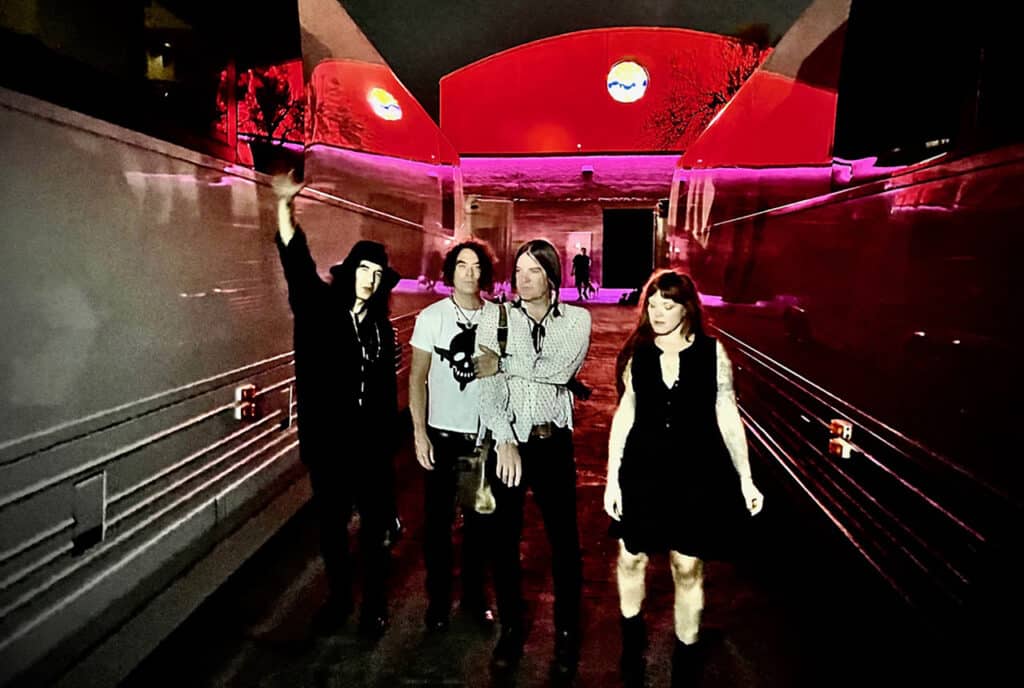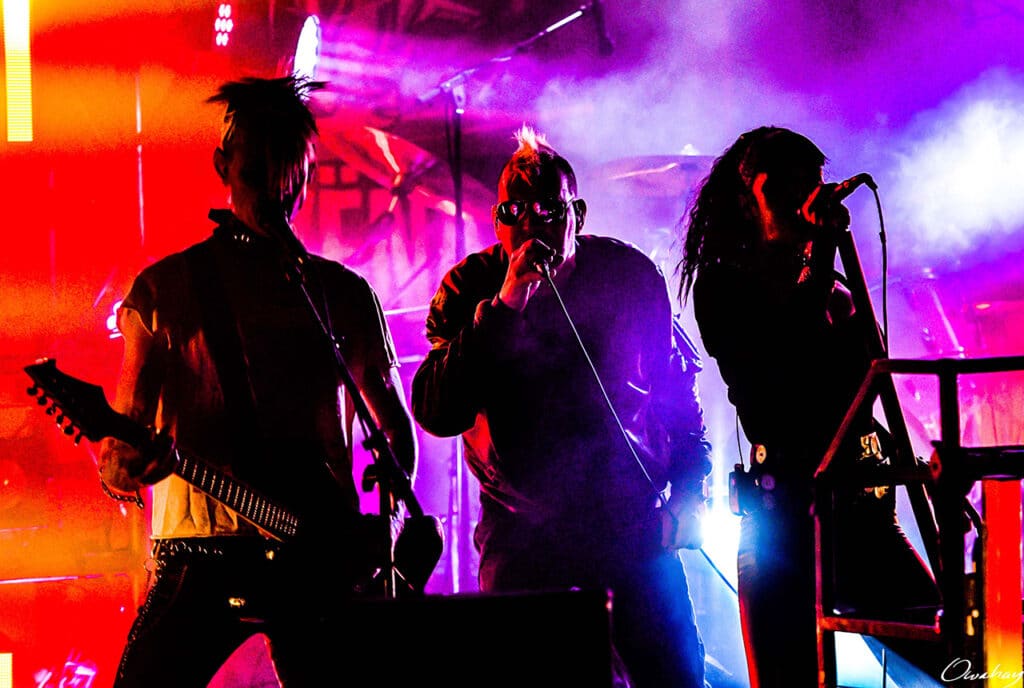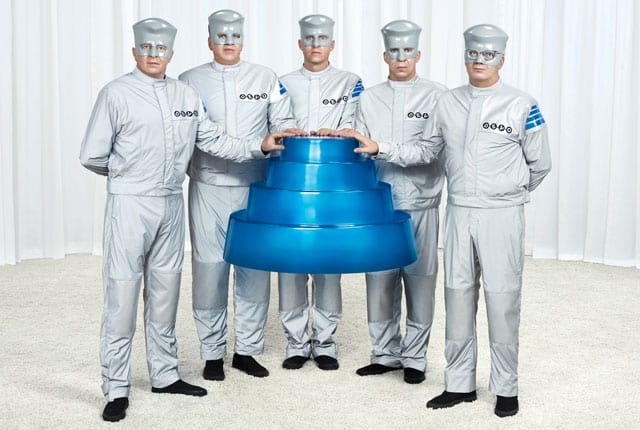Music and astrophysics may sound like an odd combination, but bringing the two disciplines together was a natural progression for Dr. Fiorella Terenzi. While completing her doctorate in physics at the University of Milan, Terenzi was also studying musical composition, opera, and piano at the Milano conservatorio di Musica Verdi. In America doing research, Terenzi came up with a way to combine her two areas of expertise by creating music from the signals radio telescopes receive from space.
Terenzi currently has one album out, “Music From the Galaxies” (Island), and recently released her first CD Rom, “Invisible Universe” (Voyager). The CD Rom features information, images and videos about the universe, as well as Terenzi’s music. Terenzi also appeared on Thomas Dolby’s soundtrack to the “Gate To the Mind’s Eye” video (Dolby returned the favor by reading poetry on “Invisible Universe.”)
How did you come up with the idea to use information picked up by radio telescopes as the basis for music?
Dr. Terenzi: Everything started during my doctoral research at the University of California, San Diego, Computer Audio Research Laboratory, where by applying sound synthesis language to radio astronomical data I came up with a technique called Acoustic Astronomy. This experiment focused on the radio emission collected via radio telescopes from a galaxy 180 million light years away and allowed me to listen to galactic radio waves. The purpose of this first experiment was to allow me to explore if sound can be useful for astronomical investigations – to see if sound can reflect chemical, physical and dynamical properties of celestial objects. After the straight scientific research I started to play and compose music with the galactic and other space sounds. But the idea started with my investigations into audification of celestial data.
Was combining music/entertainment with science/education always a goal of yours, or is it just the product of your interests?
Dr. Terenzi: It was the product of desperation after 20 years of boring professors, teaching me science in a boring way. You look around and you see only men – no female role models. You are also in a country like Italy much dominated by men and you are a teenager trying to decide what to do with your life. So you turn to movies or TV to look for a role model, and what you see is the work of George Lucas or Steven Speilberg. You hope to find some female role model, maybe someone intelligent, sensual, fun, artistic, musical but yet again you face movies where the main characters are always men. So you can understand how easy it is to get frustrated, or much better super-angry. That’s why I invented a new way of being. A new way of being both as a musician doing radio-astronomical music and as an astrophysicist doing music. So of course it is a goal, but it is a way of being more than a goal. I cannot separate that from who I am.
Was it difficult figuring out how to create music from it, and can you describe the process?
Dr. Terenzi: Yes it was. Radio astronomical sounds are extremely complex with an unlimited number of microtonal variations, bleeps, sweeps, noises all mixed up together in what I love to call a “radio galactic symphony”. I usually like to sit at the piano and write down musical elements which I derive from these astronomical sounds. They might be just simple notes, or some hints on tonalities or even chords. Then I use my imagination and my inspiration to write music starting from these elements. Sometimes I also like to use the radio galactic sounds as they are, as a continuous galactic background on top of which I create orchestral music or techno/dance loops and I sing along. Also I love to sample the galaxy in very short samples, so short that when you play the samples via keyboard the galaxy sounds like melodic instruments or a drum, a cosmic drum which I use for more up-tempo pop tracks.
On average, how much information do you have to go through to get the material for one song?
Dr. Terenzi: Talking about music, I usually write songs in a way that I never know how it happens. It might be a sound of a half second triggering my imagination and I get out a complete song in half an hour or so. Sometimes I spend days writing and printing music on paper to try to give a melodic feeling to these radio data, but most of the time music comes to me based on rhythms. To me drums, percussion are the heart of my music and the way I like to write. Starting from the drums.
What are the scientific benefits to turning it into sound rather than images?
Dr. Terenzi: Sounds may reflect information that is otherwise hidden in the visual investigation. For instance signals at two frequencies that are very close together, perhaps associated with a binary star system, are very difficult to distinguish in a visual representation such as a false-color picture or diagram, but two sounds at very similar frequencies create “beats”, an easily heard pulsing sound. Beats are well known in the acoustic domain and very easily detectable.
Are you planning to do more albums?
Dr. Terenzi: Yes. Many. I was recently in studio for A&M with two producers – Jeff Smith and Peter Lord, who did the first two Paula Abdul albums. We worked on two tracks – a cross between Enigma and Madonna with some Pink Floyd and funky grooves. “Extension of You” and “Supernova Amore”. I plan to be back in studio as soon as I return from a short tour in Europe, at the end of February. For me, music is the way I want to teach science and have people dancing to the beat of stars. I want them to experience the cosmos and the universe with all of their feeling and emotion, and nothing can convey that better than music.
What was the motivation for doing the “Invisible Universe” CD Rom?
Dr. Terenzi: With “Music from The Galaxies” I worked on the inaudible universe, now I wanted to work on the invisible universe around us. A universe not detectable with our eyes, made by infrared, ultraviolet, x-ray and gamma radiation. Both the in-audible and the invisible universe are different representations of the same phenomena which are the cosmos around us. I believe that only by transcending the limits of our vision might we perceive a more global image of what surrounds us.
Was the music created especially for the CD ROM?
Dr. Terenzi: Some of the tracks were done in Italy, inspired by my vision of the Italian night sky. Others were composed for and played during my planetarium and laserium concerts at places like Morrison Planetarium, Griffith Observatory, Santa Monica College, Fort Worth music festival and so on. “Comets” was previously used for a promotional piece for Polaroid in which I was also the on-screen talent.
Were there any things you would have liked to have done with “Invisible Universe” that you were unable to because of technical limitations?
Dr. Terenzi: For me already to be able to fit everything like videos, musical clips, guided tours, poetry, art work into a CD is something that I see as a landmark in the way you can do music, communicate, educate. Technical limitations – of course. They will be solved in the near future. But the most important point is the great possibility we have today to create something new. In the future we will be able to fit more music at “CD quality”, have longer and full-screen video clips, but again the most important thing is to be able to create something new in the way you present astronomy, biology, or even music.
You worked with Thomas Dolby before – how did you meet up with him?
Dr. Terenzi: I met Thomas while I was performing at the Digital-Art Human Be-In in San Francisco and immediately we felt the same background in terms of music, technology, and vision. One week later we were in studio to create the two tunes you know – Quantum Mechanic and NEO. The way we composed and worked together was very natural and I respect and love a lot the work of Thomas. Besides being a great musician and a visionary, he is also a great producer. There are so many other ideas Thomas and I could pursue, both in terms of music, multimedia titles, games, and I look forward to working with Thomas again soon in the future.
Thomas Dolby is very interested in giving users of interactive media the power to manipulate the music and sounds. Do you think you’d ever want to do a CD Rom that would allow people to play with and manipulate some of the sounds you’ve created from the radio telescope data?
Dr. Terenzi: Oh yeah, definitely I want to do something like that. I want to have people be able to manipulate my radio-astronomical sound. Actually one of my future aims is to be able to turn my first release “Music from the Galaxies” (Island) into public domain, to give back to people what they already own but haven’t had access to.










